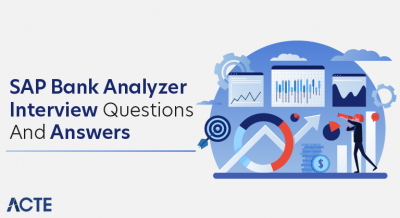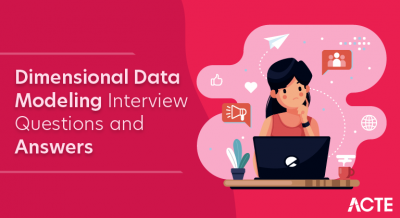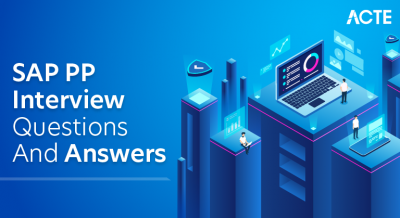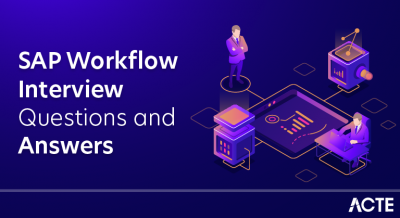
Pentaho is a robust open-source business intelligence (BI) platform renowned for its comprehensive suite of tools catering to data integration, analytics, reporting, and visualisation needs. It provides a versatile environment for organisations to gather, transform, and analyse data from multiple sources, enabling the creation of meaningful reports and visual representations. With its components spanning ETL (Extract, Transform, Load), data warehousing, OLAP (Online Analytical Processing), and dashboard creation, Pentaho is business intelligence (BI) software that provides data integration, OLAP services, reporting, information dashboards, data mining, and extract, transform, and load (ETL) capabilities. Its headquarters are in Orlando, Florida. Pentaho was acquired by Hitachi Data Systems in 2015 and, in 2017, became part of Hitachi VantaraPentaho offers an enterprise and community edition of the software.Pentaho offers a user-friendly interface suitable for both technical and non-technical users.
1. What does Pentaho?
Ans:
It addresses the blockades that block organization’s ability to get value from all data. Pentaho is discovered to ensure each member of team from developers to business users can easily convert data into the value.
2. Mention major features of Pentaho?
Ans:
Direct Analytics on MongoDB: It authorizes the business analysts and IT to access, analyse, and visualize MongoDB data.
Science Pack: Pentaho’s Data Science Pack operationalizes analytical modeling and machine learning while allowing the data scientists and developers to unburden labor of data preparation to the Pentaho Data Integration.
3. What does importance of metadata in Pentaho?
Ans:
A metadata model in Pentaho formulates physical structure of database into the logical business model. These mappings are stored in central repository and allow developers and administrators to build business-logical DB tables that are cost effective and optimized.
4. Define Pentaho Reporting Evaluation.
Ans:
Pentaho Reporting Evaluation is the particular package of subset of the Pentaho Reporting capabilities, designed for a typical first-phase evaluation activities such as accessing a sample data, creating and editing reports, and viewing and interacting with the reports.
5. Explain benefits of Data Integration.
Ans:
- Accurate the data extraction, which further facilitates flexible reporting and monitoring of available volumes of data.
- Helps meet deadlines for an effective business management.
- Track customer’s information and buying the behavior to improve traffic and conversions in future, thus advancing the business performance.
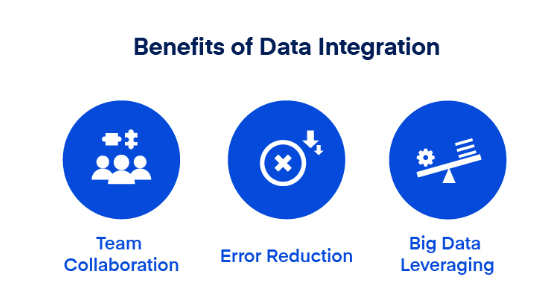
6. What does MDX and its usage?
Ans:
MDX (Multidimensional Expressions) is a language specifically designed for querying and manipulating data stored in multidimensional databases, particularly OLAP (Online Analytical Processing) systems.
Its usage primarily revolves around extracting data, performing complex calculations, and navigating hierarchical structures within these multidimensional datasets.
7. Define three major types of Data Integration Jobs.?
Ans:
Transformation Jobs : Used for preparing a data and used only when the there is no change in the data until transforming of data job is finished.
Provisioning Jobs : Used for the transmission/transfer of the large volumes of data. Used only when no change is data is allowed for the unless job transformation and on large provisioning requirement.
Hybrid Jobs : Execute both the transformation and provisioning jobs. No limitations for a data changes; it can be updates for regardless of success/failure.
8. Distinguish difference between Transformations and Jobs.
Ans:
| Aspect | Transformations | Jobs | |
| Function |
Execute data processing tasks, ETL, data manipulation. |
Orchestrates task execution, scheduling | |
| Focus | ETL operations, data transformation, cleansing | Manages task sequences, workflow | |
| Operation Level | Granular data-level processing | Manages broader task coordination |
9. How does perform database join with PDI (Pentaho Data Integration)?
Ans:
PDI supports joining of two tables form a same databse using a ‘Table Input’ method, performing a join in the SQL only. On other hand, for joining two tables in the different databases, users implement ‘Database Join’ step. However, in database join, every input row query executes on a target system from main stream, resulting in the lower performance as the number of queries implement on B increases.
10. Explain does sequentialize transformations?
Ans:
Since PDI transformations are support parallel execution of all steps/operations, it is impossible to sequentialize transformations in the Pentaho. Moreover, to make this happen, users need to change a core architecture, which will actually result in a slow processing.
11. Can field names in the row duplicated in Pentaho?
Ans:
In Pentaho Data Integration (PDI), field names (also known as column names) in the row cannot be duplicated within same row. Every field within a row must have a unique name to ensure proper identification and processing of data. Duplicating field names in a same row would create ambiguity and confusion, making it challenging for a transformations and jobs to the function correctly.
12. Does transformation allow filed duplication?
Ans:
“Select Values” will rename the field as select the original field also. The original field will have duplicate name of other field now.
13. How does database connections from repository?
Ans:
In Pentaho, the repository stores database connections as metadata, enabling users to define and save connection details for different databases in a centralized location. This approach ensures ease of management, reusability across multiple transformations and jobs, and enhanced security by controlling access to these connections. Storing connections in the repository streamlines access to various databases, fostering consistency and security while simplifying maintenance and reducing redundancy in connection setup.
14. Explain the concept Pentaho Dashboard.
Ans:
Dashboards are the collection of different information objects on a single page including diagrams, tables and textual information. The Pentaho AJAX API is used to extract the BI information while Pentaho Solution Repository contains content definitions.
15. How does logic from one transformation/job in other process?
Ans:
Transformation logic can be shared using the subtransformations, which provides a seamless loading and transformation of variables enhancing efficiency and productivity of system. Subtransformations can called and reconfigured when required.
16. Explain of Pentaho reporting.
Ans:
Pentaho reporting enables the businesses to create a structured and informative reports to simply access, format and deliver meaningful and important information to the clients and customers. They also help the business users to analyze and track consumer’s behavior for a specific time and functionality, thereby directing them towards right success path.
17. What does Pentaho Data Mining?
Ans:
Pentaho Data Mining refers to Weka Project, which consists of detailed tool set for a machine learning and data mining. Weka is open source software for extracting a large sers of information about users, clients and businesses. It is built on a Java programming.
18. Is Data Integration and ETL Programming same?
Ans:
No. Data Integration refers to the passing of data from one type of systems to the other within the same application. On contrary, ETL is used to extract and access a data from different sources. And transform it into the other objects and tables.
19. Explain Hierarchy Flattening.
Ans:
It is just construction of parent child relationships in the database. Hierarchy Flattening uses both the horizontal and vertical formats, which enables simple and trouble-free identification of sub elements. It further allows the users to understand and read main hierarchy of BI and includes the Parent column, Child Column, Parent attributes and Child attributes.
20. Explain Pentaho report Designer (PRD).
Ans:
PRD is the graphic tool to execute report-editing functions and create a simple and advanced reports and help users can export them in PDF, Excel, HTML and CSV files. PRD consists of aJava-based report engine offering the data integration, portability and scalability. Thus, it can be embedded in the Java web applications and also the other application servers like Pentaho BAserver.
21. Define Pentaho Report types.
Ans:
Interactive Reports: These reports offer dynamic features that allow users to interact with the data.
Printable Reports: Printable reports are designed for static or predefined layouts suitable for printing or sharing.
Ad Hoc Reports: Ad Hoc reports empower users to create reports on-the-fly, without predefined templates or structures.
Dashboards: While not strictly traditional reports, dashboards present a visual summary of data through widgets and visual components like charts, graphs, and gauges.
22. What does variables and arguments in transformations?
Ans:
Transformations dialog box consists of a two different tables: one of arguments and other of variables. While arguments refer to the command line specified during batch processing, PDI variables refer to the objects that are set in the previous transformation/job in OS.
23. How does configure JNDI for Pentaho DI Server?
Ans:
Pentaho offers the JNDI connection configuration for a local DI to avoid continuous running of application server during development and testing of transformations. Edit properties in jdbc.propertiesfile located at…\data-integration-server\pentaho-solutions\system\simple-jndi
24. Define the Pentaho BI Project?
Ans:
The Pentaho BI Project is the current effort by the Open Source communal to provide a groups with best-in-class solutions for initiative Business Intelligence (BI) needs.
25. What does major applications comprised of Pentaho BI Project?
Ans:
- Business Intelligence Platform
- Data Mining
- Reporting
- Dashboards
- Business Intelligence Platform
26. Which platform benefits from Pentaho BI Project?
Ans:
- Java developers who generally use the project components to rapidly assemble a custom BI solutions
- ISVs who can improve value and ability of their solutions by embedding the BI functionality
27. Is Pentaho a Trademark?
Ans:
Yes, Pentaho is the trademark. Pentaho is the popular open-source business intelligence (BI) suite that provides a data integration, ETL (Extract, Transform, Load), OLAP (Online Analytical Processing), and reporting capabilities. It is owned and maintained by the Hitachi Vantara, subsidiary of Hitachi Ltd.
28. What does Pentaho Metadata?
Ans:
Pentaho Metadata is the piece of the Pentaho BI Platform designed to make it simpler for users to access information in the business terms.
29. How does Pentaho Metadata work?
Ans:
With the help of a Pentaho’s open-source metadata capabilities, administrators can outline the layer of abstraction that presents database information to business users in the familiar business terms.
30. Explain MDX?
Ans:
Multidimensional Expressions (MDX) is the query language for OLAP databases, much like SQL is query language for a relational databases. It is also a calculation language, with the syntax similar to spreadsheet formulas.
31. Define Tuple?
Ans:
In context of databases and relational data modeling, a tuple refers to single, ordered set of related data elements. It is also known as row or record in database table. Each tuple in the table represents a specific instance or entry of entity that table holds information about.
32. What does of data, cube contain?
Ans:
A data cube serves as a multidimensional representation of data within a data warehouse or OLAP system, containing three key elements. Firstly, it incorporates dimensions, which are categorical attributes representing various perspectives of the data, such as time, products, or geographical locations. Secondly, it includes measures or facts, which are the numerical values or metrics being analyzed, like sales revenue or quantities sold.
33. How does database join with PDI?
Ans:
- If need to join 2 tables from same database, can use a “Table Input” step and do join in SQL itself.
- If need to join 2 tables that are not in a same database. And can use “Database Join”.
34. What does requirements for Pentaho report designer?
Ans:
Pentaho Reporting requires the minimum of 192MB of allocated a heap-space to process reports. Reports with more than 400 pages or about 50.000 rows of data may require the additional memory and/or adjustments to global configuration parameters of a reporting engine.
35. Is Pentaho an ETL tool?
Ans:
Pentaho Data Integration(PDI) provides an Extract, Transform, and Load (ETL) capabilities that facilitate a process of capturing, cleansing, and storing data using a uniform and consistent format that is accessible and relevant to the end users and IoT technologies.
36. Why can’t duplicate field names in a single row?
Ans:
If have duplicate field names. Before a PDI were able to force duplicate fields, but also only the first value of duplicate fields could ever be used.
37. Differentiate between Arguments and variables?
Ans:
- Arguments are command-line arguments that would normally specify during the batch processing.
- Variables are environment or PDI variables that would normally set in the previous transformation in a job.
38. What does applications of Pentaho?
Ans:
- BI Platform (JBoss Portal)
- Pentaho Dashboard
- JFreeReport
- Mondrian
- Kettle
39. What Pentaho Dashboard?
Ans:
Pentaho Dashboards give the business users the critical information they need to be understand and improve an organizational performance.
40. Define Pentaho Schema Workbench?
Ans:
Pentaho Schema Workbench offers the graphical edge for designing the OLAP cubes for a Pentaho Analysis.
41. Explain Pentaho Report designer?
Ans:
It is the visual, banded report writer. It has the various features like using the subreports, charts, and graphs.
42. Define Pentaho Report types.
Ans:
ETL stands for an Extract, Transform, Load, and it refers to a process of collecting, transforming, and loading a data from various sources into a central database or data warehouse for analysis, reporting, and business intelligence purposes. ETL is the crucial part of data integration and business intelligence systems, enabling organizations to consolidate a data from the multiple sources, clean and transform it into consistent format, and store it in centralized location for the analysis and reporting.
43. What does hierarchical navigation?
Ans:
A hierarchical navigation menu allows the user to come directly to section of site several levels below the top.
44. What does steps to Decrypt a folder or file?
Ans:
- Right-click on folder or file wwant to decrypt, and then click on Properties option.
- Click a General tab, and click Advanced.
- Clear Encrypt contents to secure data checkbox, click OK, and then click OK again.
45. Explain the Encrypting File system?
Ans:
It is technology that enables a files to be transparently encrypted to secure personal data from the attackers with physical access to computer. The Encrypting File System (EFS) is the feature in Windows operating systems that allows the users to encrypt files and folders to protect data from unauthorized access. EFS uses the symmetric key encryption to secure files and folders
46. What does repository?
Ans:
A repository, in context of information technology and software development, generally refers to centralized storage system or a database where a various types of data, files, configurations, or metadata are stored and managed. Repositories are commonly used in the different areas of computing, including the version control systems, database management, business intelligence, and a content management systems
47. Explain ETL tool?
Ans:
ETL Tool is used to getting a data from many source systems are RDBMS, SAP, etc., and convert them based on user requirement. It is required when data float across the many systems.
48. What does ETL process? Write the steps also?
Ans:
ETL is the extraction, transforming, loading process the steps are :
- Define a source
- Define a target
- Create a mapping
- Create a session
- Create a workflow
49. What does metadata?
Ans:
Metadata refers to data that provides an information about other data. It describes the various aspects of a piece of information, such as its content, format, location, and the other attributes. In the context of digital files and online content, metadata includes the details like the author of document, the date it was created or modified, file size, and a file type
50. What does snapshots?
Ans:
Snapshots are read-only copies of the master table located on remote node that can be periodically refreshed to reflect changes are made to the master table.
51. What does data staging?
Ans:
- Open Source
- Have community that support the users
- Running well under multi platform (Windows, Linux, Macintosh, Solaris, Unix, etc)
- Have complete package from reporting, ETL for warehousing data management,
- OLAP server data mining also dashboard.
52. Define mapping?
Ans:
Data flow from a source to target is called mapping.
- # Data mapping example
- source_data = {‘source_field’: ‘value’}
- mapped_data = {‘destination_field’: source_data[‘source_field’]}
- print(mapped_data) # Output: {‘destination_field’: ‘value’}
53. Explain the session?
Ans:
It is the set of instruction which tells when and how to move a data from respective source to target. Pentaho, which is more popular open-source business intelligence (BI) suite, a “session” typically refers to the user’s interaction with Pentaho software. Pentaho provides the user-friendly environment for a data integration, analysis, reporting, and dashboard creation.
54. Whatdoes Workflow?
Ans:
A workflow refers to the sequence of actions or steps that are executed in specific order to accomplish a specific task or business process. Workflows in the Pentaho are created using Pentaho Data Integration (PDI) tool, which is a part of Pentaho suite.
55. What is Pentaho tool used for?
Ans:
Pentaho is the Business Intelligence tool that offers the wide range of data solutions to its customers. The main features of this tool are reporting, data integration, data mining, data analysis that account for improvement of a business.
56. What does three-tier data warehouse?
Ans:
A data warehouse is a three-tier system where the middle system provides the usable data in secure way to end-users. Both sides of this middle system are end-users and back-end data stores.
57. What does ODS?
Ans:
ODS is an Operational Data Store that comes in between the data warehouse and staging. Operational Data Store is the type of database designed to integrate data from the multiple sources for real-time operational reporting and analysis. Unlike a data warehouses, which are optimized for a complex queries and aggregations, an ODS is optimized for the transactional processing and provides a consistent, current view of a data from various sources.
58. Differentiate between the Etl tool and OLAP tool?
Ans:
ETL Tool is used for an extracting data from the legacy system and load it into specified database with some processing of a cleansing data.
OLAP Tool is used for reporting process. Here data is available in multidimensional model hence can write a simple query to extract a data from the database.
59. Who does XML?
Ans:
XML is an extensible markup language which defines the set of rule for encoding documents in both the formats which is human-readable and machine-readable.
60. What does different versions of Informatica?
Ans:
- Informatica Powercenter 4.1
- Informatica Powercenter 5.1
- Powercenter Informatica 6.1.2
- Informatica Powercenter 7.1.2
61. What does various tools in ETL?
Ans:
- Abinitio
- DataStage
- Informatica
- Cognos Decision Stream
62. Define multi-dimensional cube?
Ans:
- Full Load means completely erasing the insides of one or more tables and filling with fresh data.
- Incremental Load means applying ongoing changes to one or more tables based on a predefined schedule.
63. How does duplicate a field in row in a transformation?
Ans:
To duplicate a field in a row during a data transformation, you’d typically utilize functions or operations provided by data manipulation tools or programming languages. For instance, in Python using Pandas, you can create a new column with the same values as the field you want to duplicate, or you can modify the existing column values to replicate them.
64. Why can’t duplicate field names in the single row?
Ans:
PDI will complain in the most cases if have duplicate field names. Before PDI v2.5.0 were able to force duplicate fields, but also only a first value of the duplicate fields are could ever be used.
65.Define Pentaho Data Integration is composed of primary components?
Ans:
Pentaho Data Integration (PDI), also known as Kettle, consists of core components facilitating the ETL process. These include Spoon, a graphical design tool for creating transformations and jobs; Pan and Kitchen, command-line tools to execute transformations and jobs outside the graphical interface; Transformations, defining data flow and transformations within workflows; and Jobs, orchestrating sequences of transformations or job entries.
66. What major applications comprise of a Pentaho BI Project?
Ans:
The Pentaho BI Project encompasses following major application areas:
- Business Intelligence Platform
- Data Mining
- Reporting
- Dashboards
- Business Intelligence Platform
67. Which platform benefits from Pentaho BI Project?
Ans:
Java developers who generally use the project components to rapidly assemble a custom BI solutions
ISVs who can improve value and ability of solutions by embedding BI functionality
68. Is Data Integration and ETL Programming the same?
Ans:
No. Data Integration refers to passing of data from one type of system to the another within the same application. On contrary, ETL is used to an extract and access data from a different sources. And transform it into the other objects and tables.
69. What does variables and arguments in transformations?
Ans:
The transformations dialog box consists of a two different tables: one of the arguments and other variables. While arguments refer to command line specified during batch processing, PDI variables are refer to objects that are set in the previous transformation/job in the OS.
70. How does configure JNDI for Pentaho DI Server?
Ans:
Pentaho offers the JNDI connection configuration for a local DI to avoid continuous running of application server during the development and testing of transformations. Edit properties in jdbc.properties file located at data-integration-serverpentaho-solutionssystemsimple-jndi.
71. Define Pentaho – Page Footer and header Fields ?
Ans:
- Informatica Powercenter
- Powercenter Informatica
- Informatica Powercenter
Each page of the report contains a two special areas. At top of every page, will find a page-header area. And at bottom of the page, will find the page-footer area. The remaining page is available for a actual report content.
72. What does three tier data warehouse?
Ans:
A data warehouse is said to be three-tier system where middle system provides the usable data in a secure way to end users. Both side of this middle system are end users and back-end data stores.
73. What does Pentaho tool used for?
Ans:
Pentaho is the Business Intelligence tool that offers the wide range of data solutions to its customers. The main features of this tool are reporting, data integration, data mining, data analysis that account for improvement of business.
74. What language does used in Pentaho?
Ans:
Java
Pentaho Analysis Services, codenamed Mondrian, is the open-source OLAP (online analytical processing) server, written in a Java. It supports the MDX (multidimensional expressions) query language and XML for Analysis and olap4j interface specifications.
75. What does database of Pentaho?
Ans:
Pentaho Data Integration allows to explain connections to the multiple databases provided by multiple database vendors(MySQL, Oracle, Postgres, and many more). Pentaho Data Integration ships with most suitable JDBC drivers forsupported databases and its primary interface to a databases is through JDBC.
76. Is Pentaho still used?
Ans:
- If you look in the PDI main directory you will see a sub-directory “simple-jndi”, which contains a file called “jdbc.properties”. You should change this file so that the JNDI information matches the one you use in your application server.
- After that you set in the connection tab of Spoon the “Method of access” to JNDI, the “Connection type” to the type of database you’re using. And “Connection name” to the name of the JDNI datasource (as used in “jdbc.properties”).
77. What does disadvantages of Pentaho?
Ans:
- The interface design can be a sloppy, and there is no single interface for all the components
- Compared to the other BI tools, this technology evolves at much slower pace.
- Inadequate community support.
78. What does table input in Pentaho?
Ans:
The Table Input step reads the information from the connected database using the SQL statements. Basic SQL statements can be generated automatically by clicking Get SQL select statement button
79. Where does Pentaho store data?
Ans:
All the content is stored in DBMS via JCR (Apache Jackrabbit). As default is used the HSQLDB, databases are stored in a data/hsqldb directory.
80. What does industries use Pentaho?
Ans:
Pentaho Customers by the Industry
The three top industries that use the Pentaho for Business Intelligence (BI) are Big Data ,Analytics .
81. What does KJB in Pentaho?
Ans:
The Pentaho packages are contain job (KJB) and transformation (KTR) files that are created in Pentaho Data Integration tool. The KJB files (jobs) and KTR files (transformations) store a metadata in XML format. A KJB file contains the series of transformations that are run in the sequence.
82. Is Pentaho free to use?
Ans:
Pentaho, a subsidiary of the Hitachi Vantara, is open source platform for data integration and analytics. The software comes in the free community edition and subscription-based enterprise edition.
83. What does select values in Pentaho?
Ans:
The Select Values step can perform all actions on fields in PDI data stream: Select values. Remove values. Rename values. Change a data types.
84. How does enable lazy conversion in Pentaho?
Ans:
Click the Get SQL select statement button to be browse tables and automatically generate the basic select statement. Select this option to enable a lazy conversion algorithm. When selected, lazy conversion avoids the unnecessary data type conversions when possible, which can significantly improve the performance.
85. Where does kettle properties file in Pentaho?
Ans:
This file is located in . kettle folder in the home directory. Pan and Kitchen recognize variables defined in this file in a same way that Spoon does.
86. What does difference between Talend and Pentaho?
Ans:
Talend is the open-source data integration tool, whereas Pentaho Kettle is the commercial open-source data integration tool. Talend offers the limited connectivity to concurrent databases and the other forms of data. Still, it depends on a Java drivers to connect to data sources.
87. What does type of license is Pentaho?
Ans:
Pentaho , an open-source business intelligence (BI) suite, is released under open-source license. which is the permissive open-source license written by Apache Software Foundation.
Under Apache License 2.0, users have the freedom to use software for any purpose, to distribute it, to modify it, and to distribute the modified versions of the software under the terms of license.
88. What does requirements for Pentaho installation?
Ans:
- Processors. Intel EM64T
- RAM. 8 GB with the 4 GB dedicated to Pentaho servers.
- Disk Space. 20 GB free after the installation.
89. How does remove null values in Pentaho?
Ans:
Check box in the CSV Input step. Then in If field value is a null step check Select fields check box and select field to check nulls and type NA in Replace by a value column.
90. How does add a header in Pentaho?
Ans:
Before writing the anything into fileA have a Text file output step and in a content tab, Add Ending line of file field, enter a custom row need to insert. Since the file is empty at beginning, last line will become a first line.
91. How does create transformation in Pentaho?
Ans:
In Pentaho’s PDI tool, create a new transformation. Drag and drop steps onto the canvas, configuring them for data handling. Connect these steps using hops to define the data flow. Test the transformation’s functionality to ensure proper operation. Save the transformation and execute it manually or schedule it for automated runs as needed.
92. Is Pentaho cloud based?
Ans:
It supports the deployment on single node computers as well as on cloud, or cluster. Pentaho for a Big Data is a data integration tool based on the Pentaho Data Integration.
93. What does Pentaho carte?
Ans:
Pentaho Analytics for the MongoDB Cookbook
The Carte server is the lightweight web server that enables the remote execution of transformations and jobs.94. How to install the JDBC driver in Pentaho?
Ans:
- Check ThoughtSpot IP and simba_server status.
- Install Simba drivers in a Pentaho directories.
- Set up driver.
- Create the transformation.
- Define Output.
- Import data.
95. What does insert update step in Pentaho?
Ans:
The Insert/Update step first looks up row in the table using one or more lookup keys. If row can’t be found, it inserts a row. If it can be found and fields to update are same, nothing is done. If not all the same, row in the table is updated.
96. What does merge step in Pentaho?
Ans:
The Merge rows (diff) step contains a following options. From drop-down list, select a input source for the original reference rows want to compare. The input source will be the previous step in transformation. From the drop-down list, select input source for a compare rows.
97. What does blocking step in Pentaho?
Ans:
The Blocking step blocks all the output until very last row is received from a previous step. At that point, last row is sent to next step or the complete input is sent off to next step. Use the Blocking Step for a triggering plugins, stored procedures, Java scripts, or for synchronization purposes.98. Define Pentaho Visualization?
Ans:
The Visualization API provides the unified way to visualize a data across the Pentaho suite, including the PDI, Analyzer, and CDF. It allows safe and isolated operation between the third party applications, business logic, and visualizations.
99. Define Advantages of Pentaho?
Ans:
- Simple installation
- Pentaho BI is the inbuilt tool with the basic concepts that help to be work easily
- Streaming engine architecture that helps to provide ability to work with the huge data volumes
- Simple of use and highly scalable
100. Define Advantages of Pentaho?
Ans:
Pentaho Groups categorize users based on roles, enabling administrators to efficiently manage access rights and permissions across the platform by assigning collective privileges to specific user groups.


